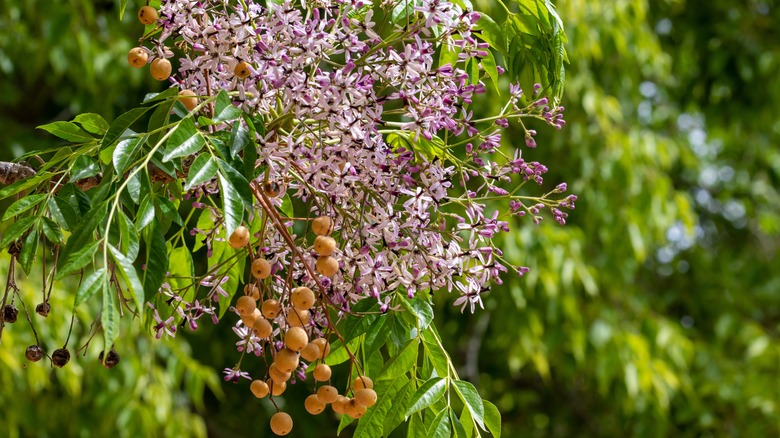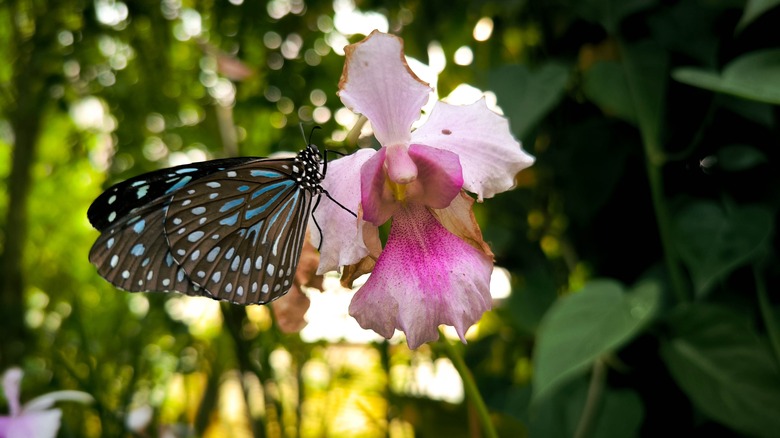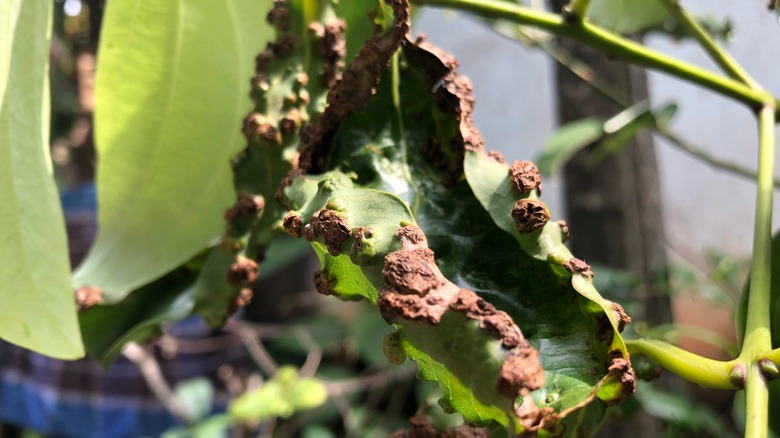Common Issues You Might Face When Growing Cinnamon
Cinnamon — the warm spice we all know and love to savor in our apple pie, butter chicken, or pumpkin spice latte — is derived from the bark of the Cinnamomum verum tree. While the idea of growing your own cinnamon tree might seem too exotic or fanciful to imagine, it's actually not impossible to do so. Cinnamomum verum trees (aka true cinnamon trees) are native to Sri Lanka, making this a tropical plant.
If you happen to live in a climate that is tropical or subtropical, you can simply grow a cinnamon tree outdoors with the rest of your garden. However, even those who live in colder climates can grow a cinnamon tree indoors in pots. During the hottest months of summer, the tree can be moved outdoors, and when the weather cools again in the spring, it can be returned to its indoor shelter. Unfortunately, true cinnamon trees are susceptible to several issues you'll need to keep an eye out for in order for your tree to thrive, including their propensity to attract pests and develop diseases.
Cinnamon can attract pests
Just as the taste and smell of cinnamon is almost intoxicating for many humans, so it is for a number of pests. In fact, there is a type of butterfly so fond of cinnamon trees that it is known as the cinnamon butterfly. Cinnamon butterflies — scientifically named Chilasa clytia — feed on the leaves of Cinnamomum verum trees during their larva stage, sometimes causing complete defoliation. This isn't the only cinnamon tree pest to have on your radar, however.
A specific mite known as the cinnamon gall mite is also a common pest of these trees, but it tends not to cause as much damage as cinnamon butterfly larvae. Additional pests with a penchant for cinnamon include root knot nematodes, leafminers, white flies, aphids, scale, and beetles. Many pest infestations can be prevented by avoiding overwatering and inspecting and hand-removing single insects before an infestation erupts. Careful gardeners may wish to apply a simple DIY neem oil spray to the plant as a pesticide.
Cinnamon trees may have diseases
Unfortunately, true cinnamon trees are just as susceptible to disease as they are to pests. If you wish to grow your own cinnamon, you'll have to also be on the lookout for several types of fungal infections. These tropical trees tend to attract leaf spot, stripe canker, seedling blight, and anthracnose. You can usually spot a fungal disease by the appearance of brown or browning spots along the tree's leaves or by the dieback of sections of bark or roots.
The first step to managing a fungal disease on your cinnamon tree is to prune away leaves or branches that look dead or diseased. Next, apply a Bordeaux mixture or a fixed copper fungicide to the tree. While both use copper ions to kill fungi by denaturing the proteins and enzymes in their cells, a Bordeaux mixture utilizes the addition of lime, which can potentially burn certain plants. However, a 1% Bordeaux mixture is known to be a safe and effective fungicide for Cinnamomum verum trees.


